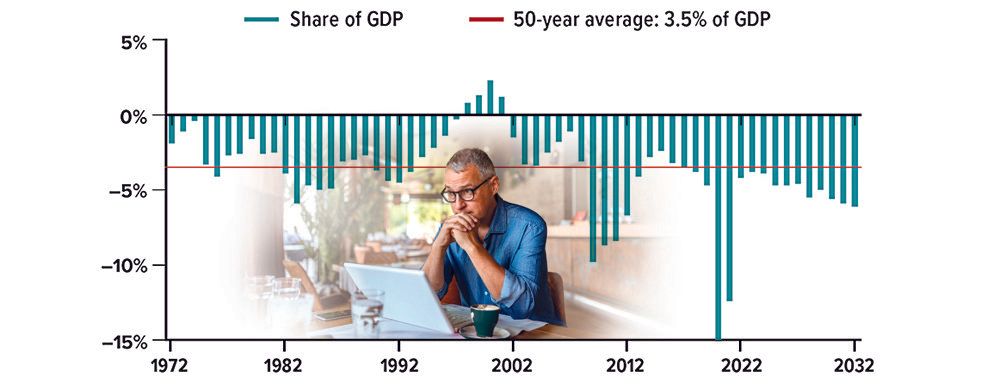U.S. Deficit Lower for Now
After record federal budget deficits of $3.1 trillion in 2020 and $2.8 trillion in 2021, the 2022 deficit is projected to drop to $1.0 trillion, due to increased tax revenue from a stronger economy and the end of government pandemic-relief spending. These deficits are equivalent to 15.0%, 12.4%, and 4.2% of gross domestic product (GDP), respectively. For comparison, the deficit averaged 3.5% of GDP over the last 50 years.
The deficit is expected to drop further in 2023 before rising steadily due to increasing health-care costs for an aging population and higher interest rates on mounting government debt. In 2032, the deficit is projected to be almost $2.3 trillion, equivalent to 6.1% of GDP.
All Securities Through Money Concepts Capital Corp., Member FINRA / SIPC
11440 North Jog Road, Palm Beach Gardens, FL 33418 Phone: 561.472.2000
Copyright 2010 Money Concepts International Inc.
Investments are not FDIC or NCUA Insured
May Lose Value - No Bank or Credit Union Guarantee
This communication is strictly intended for individuals residing in the state(s) of MI. No offers may be made or accepted from any resident outside the specific states referenced.
Prepared by Broadridge Advisor Solutions Copyright 2020.
Contact Info
Address:
9426 Spring Creek Ct
Middleville, MI 49333
Phone:
Fax :
269.795.3420
Hours:
January
Mon - Fri 9am - 5pm
Sat & Sun Closed
February - April 15 (Tax Season)
Mon - Fri 9am - 6pm
Sat 9am - 1pm
Sun Closed
April 16 - December 31
Tue - Thur 9am - 5pm
Other times by appointment
Contact Info
Address:
9426 Spring Creek Ct
Middleville, MI 49333
Phone:
Fax :
269.795.3420
Hours:
January
Mon - Fri 9am - 5pm
Sat & Sun Closed
February - April 15 (Tax Season)
Mon - Fri 9am - 6pm
Sat 9am - 1pm
Sun Closed
April 16 - December 31
Tue - Thur 9am - 5pm
Other times by appointment
All Rights Reserved | Thornapple Financial Center












